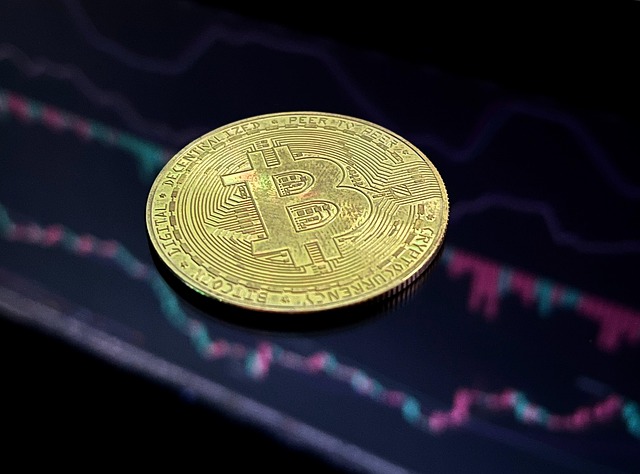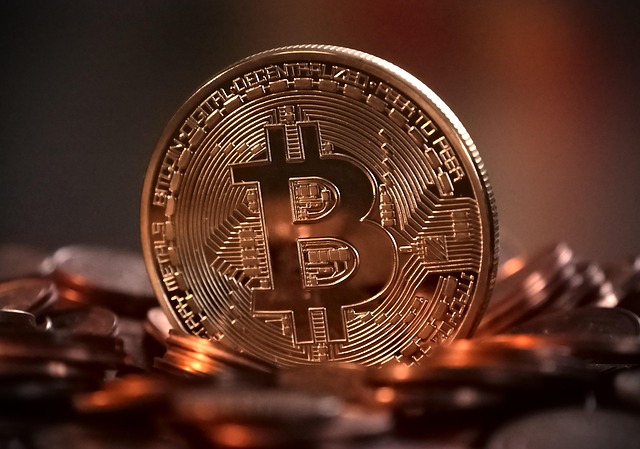Ripple acquisition of Hidden Road a ‘defining moment’ for XRPL — Ripple CTO
Ripple’s $1.25 billion acquisition of prime broker Hidden Road is a “defining moment” for the blockchain payments company, potentially unlocking more use cases for the XRP Ledger among institutions, said David Schwartz, Ripple’s chief technology officer. “Ripple’s acquisition of Hidden Road is a defining moment for the XRP Ledger and XRP,” Schwartz said on social media on April 8. Hidden Road is a prime brokerage and credit network with more than 300 institutional customers. On a typical day, it clears more than $10 billion and processes more than 50 million transactions across traditional rails. “Now imagine even a portion of that activity on the XRP Ledger — and that’s exactly what Hidden Road plans on doing — not to mention future use of collateral and real-world assets tokenized on the XRPL,” said Schwartz. Source: RippleRipple has long touted the XRP Ledger as a scalable platform for real-world assets (RWAs), having partnered with crypto exchange Archax to launch a tokenized money market fund in November. However, until now, tokenization on the XRP Ledger has been minimal. Industry data tracks only two RWAs on the XRP Ledger valued at roughly $50 million. The XRP Ledger has yet to take off as a tokenization platform. Source: RWA.xyzRelated: VC Roundup: 8-figure funding deals suggest crypto bull market far from overRWA market continues to scaleThe value of onchain RWAs has grown by 9.2% over the past 30 days, bucking a general downtrend in the cryptocurrency market tied to global growth fears and tighter financial conditions. Over that period, the number of asset holders increased by 6.2%, according to RWA.xyz. Analysts across the traditional finance industry expect tokenized RWAs to become a multi-trillion-dollar market by 2030 due to large addressable markets across bonds, commodities, equities, real estate and the M2 money supply. According to various estimates, the value of tokenized securities could reach at least $2 trillion by 2030. Source: Tokenized Asset CoalitionSome of the world’s largest companies are already experimenting with asset tokenization, with CME Group and Google recently partnering to explore how the Google Cloud Universal Ledger could improve capital market efficiency. Prometheum CEO Aaron Kaplan recently told Cointelegraph that regulatory conditions in the United States are ripe for tokenization to really take off. The biggest gap to adoption is a lack of secondary markets for buying and selling tokenized assets. However, this could soon change as crypto-native companies and traditional brokerages compete for market share.Magazine: Block by block: Blockchain technology is transforming the real estate market
Bitcoin rebounds as traders spot China ‘weaker yuan’ chart, but US trade war caps $80K BTC rally
Bitcoin (BTC) danced around $80,000 at the April 8 Wall Street open as US stock markets staged a fresh recovery, but unresolved tensions between China and the US continue to put a damper on BTC’s upside. BTC/USD 1-hour chart. Source: Cointelegraph/TradingViewHayes: Bitcoin can repeat historic China inflowsData from Cointelegraph Markets Pro and TradingView showed BTC price volatility cooling while the S&P 500 and Nasdaq Composite Index gained up to 4.3% in the first few hours of trading.Stocks built on a strong rebound that had accompanied the start of the week’s TradFi trading, alleviating fears of a 1987 “Black Monday” style crash. US trade tariffs nonetheless stayed top of the agenda for traders, who in particular eyed the ongoing war of words with China.In a post on Truth Social, US President Donald Trump claimed that Beijing “wants to make a deal, badly, but they don’t know how to get it started.”“We are waiting for their call,” he told readers.Source: Truth SocialBitcoin advocates eyed the devaluation of the yuan as part of China’s tariff response and the potential inflows to hedges such as BTC as a result.“Xi’s major weapon is independent monetary policy which necessitates a weaker yuan,” Arthur Hayes, ex-CEO of crypto exchange BitMEX, wrote in part of X coverage of the topic.Hayes suggested that either the People’s Bank of China (PBoC) or the US Federal Reserve would ultimately provide the fuel for a BTC price rally.“If not the Fed then the PBOC will give us the yachtzee ingredients,” he argued in his characteristic style. “CNY deval = narrative that Chinese capital flight will flow into $BTC. It worked in 2013 , 2015, and can work in 2025. Ignore China at your own peril.”USD/CNY 3-day chart. Source: Cointelelgraph/TradingViewThe Fed, meanwhile, could boost Bitcoin and risk assets by lowering interest rates to stimulate growth. In a blog post on the day, AllianceBernstein predicted this happening even as tariffs added to inflationary pressures.“If the economy slows, as we expect it will, the Fed will be inclined to cut rates even if price levels are high,” Eric Winograd, the firm’s Developed Market Economic Research director wrote. “The view is that actual inflation tells us what the economy was doing but not what it will do. The Fed has cut rates before with inflation elevated, and we expect it to do so again unless—a very big ‘unless’—inflation expectations become unanchored.”Fed target rate probabilities (screenshot). Source: CME GroupWinograd said that AllianceBernstein expected 75 basis points of rate cuts in 2025, with the latest data from CME Group’s FedWatch Tool showing markets betting on the first of these coming at the Fed’s June meeting.Related: $2T fake tariff news pump shows ‘market is ready to ape’Fibonacci offers a “big level to watch” for BTC priceConsidering the global market tumult of the last three days, Bitcoin’s price action has remained eerily cool on the shorter timeframes as snap price moves gave way to consolidation.For traders, among the key levels to watch was the 0.382 Fibonacci retracement level, currently near $73,500.“In a bull market, the 38.2% Fibonacci retracement acts as key support,” popular trader Titan of Crypto explained, describing BTC/USD as “in a reversal zone.”“As long as BTC closes above it, the uptrend remains intact, even with a wick below.”BTC/USD 1-month chart with Fibonacci levels. Source: Titan of Crypto/XFellow trader Daan Crypto Trades also underscored the level’s potential significance, with it coinciding with old all-time highs from March 2024.“$BTC Has respected its .382 Fibonacci retracements, measured from the cycle bottom to the local tops, quite well so far,” he told X followers. “This is the 3rd time we get such a test this cycle. This time we got some confluence from the 2024 highs as well. Big level to watch.”Other important trend lines, as Cointelegraph reported, include the 200-day simple moving average (SMA), a classic bull market support line that was lost when BTC first fell below $82,000.BTC/USD 1-day chart with 200 SMA. Source: Cointelegraph/TradingViewThis article does not contain investment advice or recommendations. Every investment and trading move involves risk, and readers should conduct their own research when making a decision.
Cboe set to launch new FTSE Bitcoin futures product in April
The Chicago Board Options Exchange (Cboe) has announced the launch of a new Bitcoin futures derivative product.According to an April 7 announcement, Cboe plans to launch the FTSE Bitcoin Index futures on April 28, which is based on the VanEck Bitcoin Strategy ETF (XBTF), if approved by regulators.The new product will be cash-settled, and like XBTF, it will represent one-tenth of the value of the FTSE Bitcoin Index. The futures will settle on the last business day of each month.This is the first product that was launched as a result of Cboe’s collaboration with the London Stock Exchange Group’s index subsidiary, FTSE Russell. The new Bitcoin derivative product is reportedly meant to complement its recently launched Bitcoin options offerings Bitcoin US ETF Index Options (CBTX) and Bitcoin US ETF Index Options (MBTX). Catherine Clay, global head of derivatives at Cboe, said:“This launch comes at a pivotal time as demand for crypto exposure continues to grow and market participants are increasingly seeking more capital-efficient and versatile ways to gain and manage that exposure.”Related: Largest ever CME gap has just printed in Bitcoin futuresCboe continues crypto product developmentCboe is a major player in the worldwide financial landscape and a historic institution founded in 1973. The exchange is also a provider of Bitcoin (BTC) products, having launched its first Bitcoin futures contracts on Dec. 10, 2017.Now, Cboe continues to innovate the traditional markets that appear so glacial in their evolution to crypto natives. In early February, the exchange further shrank the gap between crypto and traditional finance by announcing plans to roll out a 24-hour trading day — but only on weekdays.Related: Cboe files amended applications to list Bitcoin, Ethereum options in USBitcoin futures are not a thing of the pastDespite the introduction of Bitcoin exchange-traded funds (ETFs), Bitcoin futures are still widely traded and discussed among crypto market participants. In late March, Bitcoin futures leveraging led to a $10 billion open interest wipeout.Product development is also still ongoing in the segment. In March, Coinbase announced that it plans to offer 24/7 trading for Bitcoin and Ether futures to US residents.Also in March, Singapore Exchange (SGX), the largest exchange group in Singapore, was reported to plan to debut Bitcoin perpetual futures in the second half of 2025.Magazine: Bitcoin heading to $70K soon? Crypto baller funds SpaceX flight: Hodler’s Digest, March 30 – April 5
Crypto execs expect global banking push into Bitcoin by end of 2025
Despite the ongoing market meltdown on US trade tariffs, executives at major cryptocurrency firms Messari and Sygnum are bullish on institutional Bitcoin adoption later in 2025.Speaking on a panel at Paris Blockchain Week on April 8, Messari CEO Eric Turner and Sygnum Bank co-founder Thomas Eichenberger said they expect a significant shift in the banking sector’s involvement with crypto in the second half of the year.According to the executives, the global banking push into Bitcoin (BTC) services has great potential to happen in the second half of 2025 as regulators embrace crypto, including stablecoins and crypto services by banks.“I think we’re probably looking at a muted Q2, but I’m really excited for Q3 and Q4,” Messari’s Turner said during the panel discussion moderated by Cointelegraph CEO Yana Prikhodchenko, forecasting “really interesting” things coming to the crypto market in 2025.Crypto adoption is not just about TrumpWhile some investors focus on the pro-crypto stance of US President Donald Trump, Turner emphasized that broader regulatory momentum is what matters most.“When you look at the potential of having market structure regulation in the US, stablecoin regulation, and just the fact that across the board, not just President Trump himself, but the SEC and all these regulatory industries are really embracing crypto,” Turner said.Paris Blockchain Week’s panel with Cointelegraph CEO Yana Prikhodchenko, Bancor co-founder Eyal Hertzog, Sygnum co-founder Thomas Eichenberger, Messari CEO Eric Turner, AWS fintech leader Alex Matsuo and Near chief operating officer Chris Donovan. Source: CointelegraphSygnum co-founder Thomas Eichenberger said international banks with US branches are also poised to enter the market once the legal landscape becomes clearer:“I think it’s a matter of fact that US banks are preparing to be able to offer crypto custody and at least crypto spot trading services anytime soon.”“I think by then I would agree with you, Eric,” he continued, projecting a continued phase of market uncertainty until the US establishes a clear regulatory framework.Related: Ripple acquires crypto-friendly prime broker Hidden Road for $1.25BBanks are no longer afraid of Bitcoin regulatorsWith the establishment of clear crypto rules for banks in the US, there will be a rush for crypto services by large international banks that are incorporated outside of the US but have a US-based presence, Eichenberger said.“Some of them may have had their strategic plans in their cupboard to offer crypto-related services, but have been afraid that at some point they will be gone after by any of the US regulatory authorities,” he said, adding:“Now I think there’s no one to be afraid of anymore in terms of regulatory authorities worldwide. So I think many of the large international banks will launch this year.”Magazine: Financial nihilism in crypto is over — It’s time to dream big again
Scaling the EVM requires an L1, not an L2
Opinion by: Jay Jog, co-founder of Sei Labs When CryptoKitties crashed the Ethereum network in 2017, the industry learned a hard lesson about blockchain scalability. Today, with over $100 billion locked in decentralized finance (DeFi) and millions of non-fungible tokens (NFTs) being traded, that lesson is more relevant than ever. The Ethereum Virtual Machine (EVM) — the engine that powers this activity — is reaching its limits.So far, the crypto community’s answer has been layer 2 solutions — separate chains that process transactions and report back to Ethereum. But what if the community’s been looking for answers in the wrong place?Layer 2s are not the solutionLayer 2 blockchains have long been touted as the solution to the EVM’s performance challenges, given their ability to offload the computational work from Ethereum to a secondary chain. Layer-2 solutions have proven to be nothing more than a “quick fix” instead of a permanent solution, as many hoped for. As Gemini reported, a new layer 2 appeared every 19 days in 2024, indicating that the competitive landscape is creating more problems instead of solving them.Layer 2 solutions come with their own challenges, primarily tied to centralization and interoperability. Many of today’s layer 2 blockchains run with centralized sequencers that could expose the network to transaction censorship, transaction reordering and more. Additionally, Vitalik Buterin stated in a recent blog post that layer 2s are struggling to maintain interoperability. This called attention to the disorganized state of layer 2s, further contributing to liquidity fragmentation and a complex user experience. Recent: L2 gaming activity spikes in February, but wallets decline — ReportAdvanced rollup designs have tried to fix these pain points. Recently, there has been a new design called native rollups that is trying to tackle layer 2’s centralization issues. Native rollups take value away from projects, which will significantly deter adoption. Consequently, it is doubtful that native rollups are the answer to all of Ethereum’s urgent problems. With just as many challenges as the EVM itself, why rely on layer 2s instead of looking elsewhere? Could there be a better solution? According to L2BEAT, it costs around $95.53 million annually to run all the major L2s. Instead of spending more money on building and running more L2s and interoperability solutions, why not focus on refining the existing foundational layer? A more accurate alternative to TPSTo create the most performant layer 1s, the industry must first reevaluate the approach to track blockchain performance. Most blockchains focus on throughput, using transactions per second (TPS) to compare chain performance. While many argue that reaching the most significant transactions per second is the way to enable mainstream adoption for crypto, TPS unfortunately doesn’t allow for apples-to-apples comparisons since different types of transactions require different amounts of compute. For example, an Ether (ETH) transfer requires 21,000 units of gas, whereas an ERC-20 transfer needs 65,000, confirming that TPS conveys zero value when tracking mass transactions and network throughput.A new standardized performance metric that better reflects network computing capability must be developed to understand a blockchain’s full potential. This is where an alternative performance metric called “gas per second” emerges — a measure that evaluates the gas fees required to process transactions, better reflecting different transaction types. While TPS is best served to assess simple ETH transfers, gas per second shows the bigger picture by considering all computational efforts, even for complex transactions. Given the novelty of this metric, measuring gas per second across all chains will be a long process but a crucial step in blockchain’s evolution. Going back to the basics: Layer 1sThe capability of layer 1s has historically been overlooked, as many Ethereum researchers focused on a rollup-centric roadmap. As the backbone of the entire crypto ecosystem, layer 1s are the key to scaling the EVM. To solve EVM’s scalability challenge, layer 1s must start rebuilding the EVM from scratch with performance in mind above anything else. The EVM faces severe network congestion and high gas prices as volume increases. It’s time for layer 1s to scale to onboard the next generation of users. Approaches such as parallelization will help improve throughput and, combined with transforming the EVM’s consensus mechanism and storage solutions, will set a new performance standard for the industry and establish a more developer-friendly environment for projects.The proper solution to scaling the EVM For the past few years, Layer 2s have been presented as the answer to providing the cheapest and fastest way to execute transactions. Layer 2s are not what the EVM truly needs. From day one, Layer 1s have always been the true solution to the EVM’s scalability problem. It is time to be open to adopting more accurate performance metrics and divert attention to improving network performance. These changes will pave the way for the EVM to achieve its highest potential, introducing levels of scalability and efficiency never seen before. The EVM is here to stay, but its future depends on the industry to build. Opinion by: Jay Jog, co-founder of Sei Labs.This article is for general information purposes and is not intended to be and should not be taken as legal or investment advice. The views, thoughts, and opinions expressed here are the author’s alone and do not necessarily reflect or represent the views and opinions of Cointelegraph.
Can Pi Network succeed without listing on major exchanges?
No Binance listing for Pi Despite massive community support and over 2 million votes pushing for a Binance listing, Pi Network’s native token remains unlisted and unheard by the exchange as of April 2025.Pi Network launched with a bold, although somewhat farfetched mission: make cryptocurrency mining accessible to anyone with a smartphone. No expensive hardware, no complicated setup — just a simple tap once a day.While the idea would have Hal Finney turning in his grave, the concept gained traction quickly, drawing in millions of users around the world and building one of the largest crypto communities to date.Naturally, as interest in the project grew, expectations around listing on major exchanges — especially Binance — began to build.In fact, more than 2 million of Pi Network’s users participated in a community poll in early 2025, with 86% voting in favor of pursuing a Binance listing.Yet as of April 2025, Pi Network’s native token, Pi, is still not listed on Binance, the world’s largest cryptocurrency exchange by trading volume.In fact, there hasn’t even been an official statement from Binance. It’s a bit like knocking on a neighbor’s door for help and watching the curtain twitch — but no one ever opens. Why hasn’t Binance listed Pi? There are a few reasons Pi hasn’t made it onto Binance’s platform, both unofficial and official.Unofficially, concerns have circulated within the broader crypto space since Pi Network’s mainnet launch in February 2025. Critics point to artificially inflated user metrics, Ponzi-style dynamics, centralized control of the network and tokenomics, or the lack thereof, as dead giveaways.However, the official stance of Binance experts familiar with the matter suggests:Blockchain compatibility problems: Binance’s “Vote to List” initiative favors projects built on the BNB Smart Chain. Pi Network operates on its own blockchain, so it doesn’t meet the core eligibility criteria.Transparency issues: Binance expects clear and public disclosures about how a token is issued, locked or burned. So far, Pi has not provided the level of detail that major exchanges typically require. Without that transparency, it’s difficult for platforms to assess the integrity of the token’s economics.Regulatory concerns: In regions like Vietnam and China, Pi Network has come under scrutiny for operating in a way that resembles multilevel marketing (MLM). That kind of classification introduces regulatory uncertainty — something major exchanges prefer to avoid.Did you know? You can’t join Pi Network without a referral code; every user has to be invited by someone else. It’s designed to grow only through personal connections. Pi token faces market challenges Since missing out on Binance’s stamp of approval, PI’s price has continued to suffer, dropping to around $0.56 as of early April 2025 — an 80% plunge from its all-time high.And while Pi has made its way onto other platforms such as OKX, Bitget and MEXC, none of them bring the same level of exposure or liquidity. Without access to Binance’s massive user base and credibility, it’s hard for PI to gain serious traction in the broader market.Since then, Pi’s price line has been choppy. Short-lived spikes have mostly been driven by speculation — often around mainnet rumors or exchange teasers — but they’ve consistently been followed by corrections. The token has struggled to maintain upward momentum, and trading volumes remain thin compared to more established projects.The Pi Core Team has said it’s been working on improving transparency and tightening up the regulatory side of things. That’s a step in the right direction, but whether it’s enough to win over Binance — or any other top-tier exchange — is still up in the air. Can Pi survive? The answer to this question is twofold and relies on where one chooses to place the blindfolds.Blindfold on: Community power and independent infrastructurePi Network does have certain advantages that could allow it to grow without relying on top-tier exchange listings.First, its user base is massive. Even with skepticism growing, Pi claims tens of millions of users — numbers most crypto projects would kill for. This scale gives the network a built-in market for its native currency, especially in regions where mobile-first solutions have real appeal.Second, the Pi Core Team has emphasized real-world usage. Through campaigns like PiFest, it has tried to prove that Pi is a functional currency as well as a speculative asset — over 125,000 merchants reportedly signed up to accept Pi during the March 2025 event.Even though the actual payment volume remained flat, the infrastructure is at least starting to form.The team also continues to build its own ecosystem — wallets, decentralizd applications and even a proprietary Know Your Customer (KYC) system — rather than relying on third-party platforms or validators. If Pi can evolve into a closed-loop economy, where users earn, spend and exchange Pi within its own environment, major exchanges may not be as critical. In theory, Pi could carve out its own lane: not as a speculative coin traded on open markets, but as a digital currency used in peer-to-peer economies and low-cost marketplaces.Blindfold off: A fragile ecosystem with mounting pressureDespite the initial hype, Pi Coin’s performance since its mainnet launch has been dismal. The token is facing major inflation pressure: Over 124 million Pi is being unlocked in April alone, with a total of 1.53 billion entering circulation in the next year, pushing the supply to over 8.2 billion.Meanwhile, the migration process is broken. Only a fraction of users have been able to complete KYC and access their coins, with many reporting lost tokens or endless verification loops.While smaller exchanges like OKX and Bitget list Pi, tier 1 platforms like Binance, Coinbase and Kraken have steered clear. The lack of transparency from the Pi Core Team on development milestones and token economics only deepens user frustration.Did you know? It’s been reported that Bybit’s CEO called the Pi Network a “scam” — a label the developers deny but one that hangs heavy in the absence of clear communication. Without exchange listings, is there a future for Pi Network? Could Pi succeed without major exchange listings? Technically, yes — but the odds are narrowing fast.To do so, it would need to pivot fully into a functional ecosystem where Pi is used, not traded. That means solving the KYC backlog, building a real application layer, attracting developers and showing meaningful payment activity. It’s a tall order.The more likely outcome is that Pi needs at least some exchange support to gain the liquidity, visibility and trust it currently lacks. Without it, Pi may remain a well-intentioned experiment that never fully escapes its enclosed garden — or worse, collapses under the weight of its own hype.In short, Pi Network doesn’t need Binance to exist. But to thrive? That’s another story.
Bitcoin’s 24/7 liquidity: Double-edged sword during global market turmoil
Bitcoin and other cryptocurrencies are often praised for offering around-the-clock trading access, but that constant availability may have contributed to a steep sell-off over the weekend following the latest US trade tariff announcement.Unlike stocks and traditional financial instruments, Bitcoin (BTC) and other cryptocurrencies enable payments and trading opportunities 24/7 thanks to the accessibility of blockchain technology.After a record-breaking $5 trillion was wiped from the S&P 500 over two days — the worst such drop on record — Bitcoin remained above the $82,000 support level. But by Sunday, the asset had plummeted to under $75,000.Sunday’s correction may have occurred to due Bitcoin being the only large tradable asset over the weekend, according to Lucas Outumuro, head of research at crypto intelligence platform IntoTheBlock. “There was a bit of optimism last week that Bitcoin might be uncorrelating and fairing better than traditional stocks, but the [correction] did accelerate over the weekend,” Outumuro said during Cointelegraph’s Chainreaction live show on X, adding:“There’s very little people can sell on a Sunday cause most markets are closed. That also enables the correlation because people are panicking and Bitcoin is the largest asset they can sell over the weekend.”Outumuro noted that Bitcoin’s weekend trading can also have upside effects, as prices often rally in calmer conditions.Related: Trump tariff negotiations are ‘all about’ China deal — Raoul PalBitcoin initially “decoupled” from traditional assets after the US stock market saw a $3.5 trillion drop on April 4 as US Federal Reserve Chair Jerome Powell said the Trump administration’s “reciprocal tariffs” could significantly affect the economy and lead to higher inflation.However, Bitcoin fell below $75,000 on April 6 as the panic from traditional markets spread to cryptocurrencies over escalating trade war concerns.Related: Bitcoin price can hit $250K in 2025 if Fed shifts to QE: Arthur HayesMost Bitcoin investors are “all in” and overleveraged — Adam BackAdding to Bitcoin’s 24/7 trading mechanics, numerous Bitcoin holders are overleveraged, according to Blockstream CEO Adam Back.Speaking during a fireside chat with Cointelegraph managing editor Gareth Jenkinson at Paris Blockchain Week 2025, Back said:“The problem with the Bitcoin market is most of the people who are into Bitcoin are all in. So they’ve got no money. And worse, some of them are leveraged or overleveraged and it trades 24/7.”Adam Back during a fireside chat with Cointelegraph’s Gareth Jenkinson. Source: Cointelegraph“On a weekend, there’s not much volume. So you have a worse risk of rapid sort of flash crashes or flash dips that get filled in again,” he said.Back also reiterated his belief that Bitcoin will rival gold over the next decade as a hedge against rising monetary inflation.Magazine: Bitcoin ATH sooner than expected? XRP may drop 40%, and more: Hodler’s Digest, March 23 – 29
Dubai gov’t agencies to link real estate registry with property tokenization
Dubai’s real estate and crypto regulatory authorities have signed a new agreement aimed at expanding digital asset adoption in the real estate sector.On April 6, the Dubai Land Department (DLD) announced an agreement with the Virtual Assets Regulatory Authority (VARA). According to the announcement, the agreement will link Dubai’s real estate registry with property tokenization through a governance system. The agreement aims to improve digital infrastructure and attract global investment by enhancing market liquidity and property management efficiency. It also aims to support Dubai’s broader economic strategy, which includes a goal of doubling the city’s gross domestic product over the next decade.Related: Mantra and Damac sign $1B deal to tokenize Middle Eastern assetsNew real estate model opens up Dubai’s market to global investorsThe new development follows the DLD’s recent project pilot to convert real estate assets into blockchain-based digital tokens. On March 20, the DLD announced the pilot phase of its real-estate tokenization project. The tokenization launch made DLD the first real-estate registration entity in the United Arab Emirates to tokenize property title deeds. The DLD expects the initiative to drive growth in real estate investment, aiming to reach a value of over $16 billion by 2033. Scott Thiel, the co-founder and CEO of real-word asset (RWA) tokenization platform Tokinvest, told Cointelegraph that the new development shows a clear message from the UAE government: “In just three weeks, Dubai has gone from pilot launch to strategic execution and the message is loud and clear: the future of real estate investment is onchain.”Thiel also said that the two agencies working hand in hand will create a smarter model that opens Dubai’s real estate market to a global pool of investors. “This isn’t just another MOU. It’s the playbook for Real Estate 2.0,” Thiel told Cointelegraph. The executive urged investors across the globe to observe what the UAE is doing in terms of tokenization. Thiel said this is “what the future of real estate looks like.”Magazine: Crypto fans are obsessed with longevity and biohacking: Here’s why








